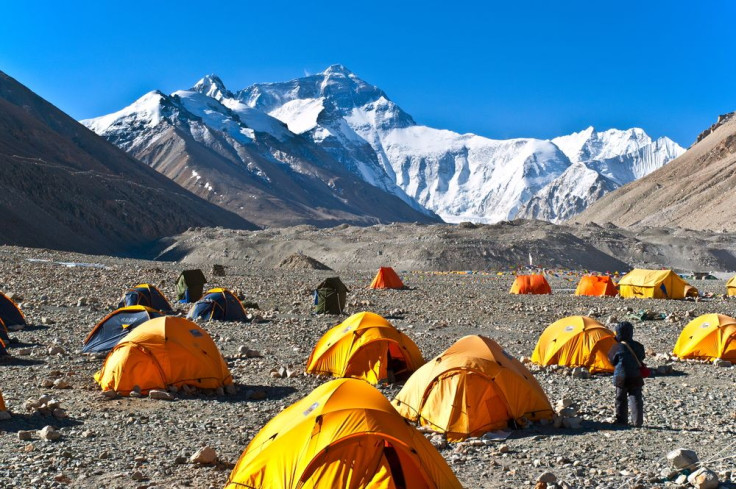Mount Everest May Become A Health Hazard For Climbers If We Don't Fix Its Poop Problem

Ang Tshering, the chief of Nepal’s mountaineering association, recently gave some grim news: It appears that there is far too much human feces being left on Mount Everest, and if the practice continues, it will pollute the environment and facilitate the spread of disease. As climbing season begins this week, officials are trying to draw attention to the growing issue.
On May 29, 1953, Tenzing Norgay of Nepal and Sir Edmund Hillary of New Zealand became the first two individuals in recorded history to reach the summit of Mt. Everest. Since their historic climb, around 700 climbers and guides have traversed the slopes of the world’s highest peak, The Guardian reported. With most climbers spending around two weeks on the slopes, this leads to a whole lot of human waste building up and not a lot of discussion of what to do with all of it.
The Nepalese mountaineer guide advises climbers to bury their poop, and climbers “usually dig holes in the snow for their toilet use and leave the human waste there,” Tenzing explained, as reported by The Guardian. However, over the years the poop has started to accumulate, and Tenzing urges the waste be disposed of in order to keep the mountain pristine, The Associated Press reported.
While many may think that there can be nothing more natural than pooping out in the open, in actuality, human feces can take up to a year to completely biodegrade, and during that time it poses a serious risk to the environment. Although humans have been pooping out in the open for thousands of years, the sheer concentration of poop in a single area, like at Mount Everest, is causing a health hazard.
Also, if there is too much waste in a single area, it will not be able to decompose properly no matter the time that has passed. Popular camp sites experience similar problems with accumulations of human feces.
Animals can be drawn to unfamiliar scents caused by human waste and left behind trash, and in turn go on to disturb vegetation. If waste is left near stream or other water sources, it can contaminate ground water.
The Nepalese government has not yet come up with a solution to tackle the problem of human waste, but they may be able to gain some pointers from those who run popular camp sites. Mother Jones reported that many eco-wise campers treat their own waste like other garbage, and rather than leave it buried will carry it with them until a proper disposal source is found.
There’s also poo powder, a NASA-developed solution gaining popularity among campers. The powder gels solidify solid waste, making it easier to transport and dispose.
The Nepalese government has recently imposed rubbish removal laws, requiring all campers to bring down 18 pounds of waste with them on their return to the summit, or face a $4,000 fine. Protocol on human waste disposal may soon follow.



























